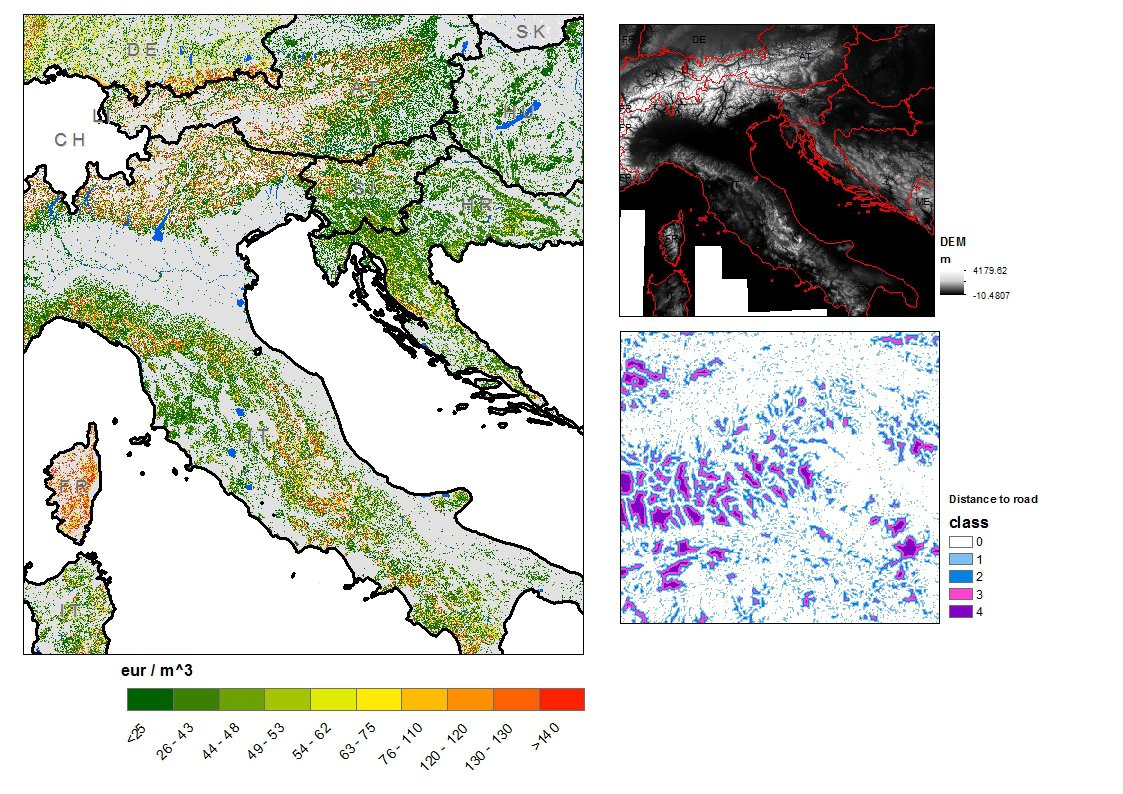Logistic costs are an important driver of wood availability. We have developed a methodology for assessing the costs of harvesting, transporting to roadside and pre-processing harvested biomass. This approach entails the description of all the operations needed for harvesting and transporting the forest biomass and the estimation of the cost of each operation.
The cost of procurement of biomass depends on the supply chain in question. Thus, it varies according to the location of the biomass (e.g., steeper slopes vs. plains), the desired assortment (e.g., fuelwood vs. industrial roundwood), the degree of mechanization of the specific country, among other factors. We define a set of supply chains that can describe the different harvesting methods across EU forests. Each supply chain is characterized with respect to the technical, financial and economic parameters that allow estimating the costs. For each EU member state, we select a few supply chains representative of the country. Specifically, we select some supply chains representative of a more mechanized approach and others of a more manual approach. We collect and analyse the state of the art in current and innovative practices in forest wood harvesting, costs and physical/spatial constraints. Costs are computed for each phase of the supply chain, taking into account the location of biomass (e.g., steeper slopes vs. plains; distance to the roadside) using spatial information such as digital elevation maps, steepness of slopes and the road network . Costs are then endogenously spatially disaggregated, so that they may be added as an attribute to the initial state table. Finally, when costs are combined to mapped forest resources, it is possible to derive a map representing the cost of procurement in each spatial unit, coupled with the amount of harvested biomass. Cost-supply curves for a specific region may be derived, thus providing information on the amount of biomass available given a certain cost over that area. These information are relevant when analysing the potential uses of forest biomass in conversion technologies or when comparing the potential supply with the potential uses.


